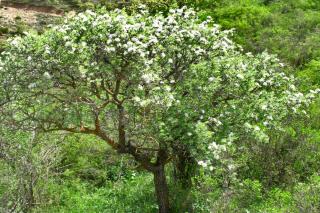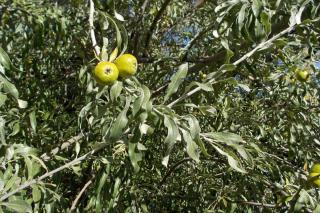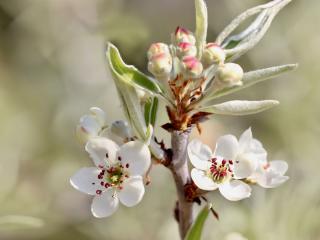

This smallish pear tree has a bearing and leaves that closely resemble those of the weeping willow.
Willow-leaf pear key facts
Name – Pyrus salicifolia
Family – Rosaceae
Type – tree
Height – 16 to 32 feet (5 to 10 m)
Exposure – full sun, part sun
Soil – ordinary
Foliage – deciduous
Flowering – March-April
Wispy leaves and sometimes weeping branches make willow-leaf pear a great ornamental tree in the garden. An outstanding ornamental pear tree, willow-leaved pear grows just the right size for a small garden.
Usually, Fall is preferable to any other season. Follow the typical steps for planting a tree.
For this species, you’ll only need to prune whenever you notice the tree is growing out of balance. This happens in shaded gardens.
 Wait for the beginning of the dormant season, Fall.
Wait for the beginning of the dormant season, Fall.During the growing phase, you can also cut dead wood off if you notice any. It helps to clear the center of the tree out if it gets too lush and bushy.

Some cultivars, those easily found in garden stores, also have a weeping habit. These are called weeping willowleaf pear, or Pyrus salicifolia ‘Pendula’. Branches trail down to the ground and produce a very nice effect.

Currently, the species is endangered in its native habitat. As some botanical specialists say, planting them in your garden can help preserve the species from utter destruction!
For this pear tree species, you can graft a branch of common pear to a side branch it and get a few delicious pears!